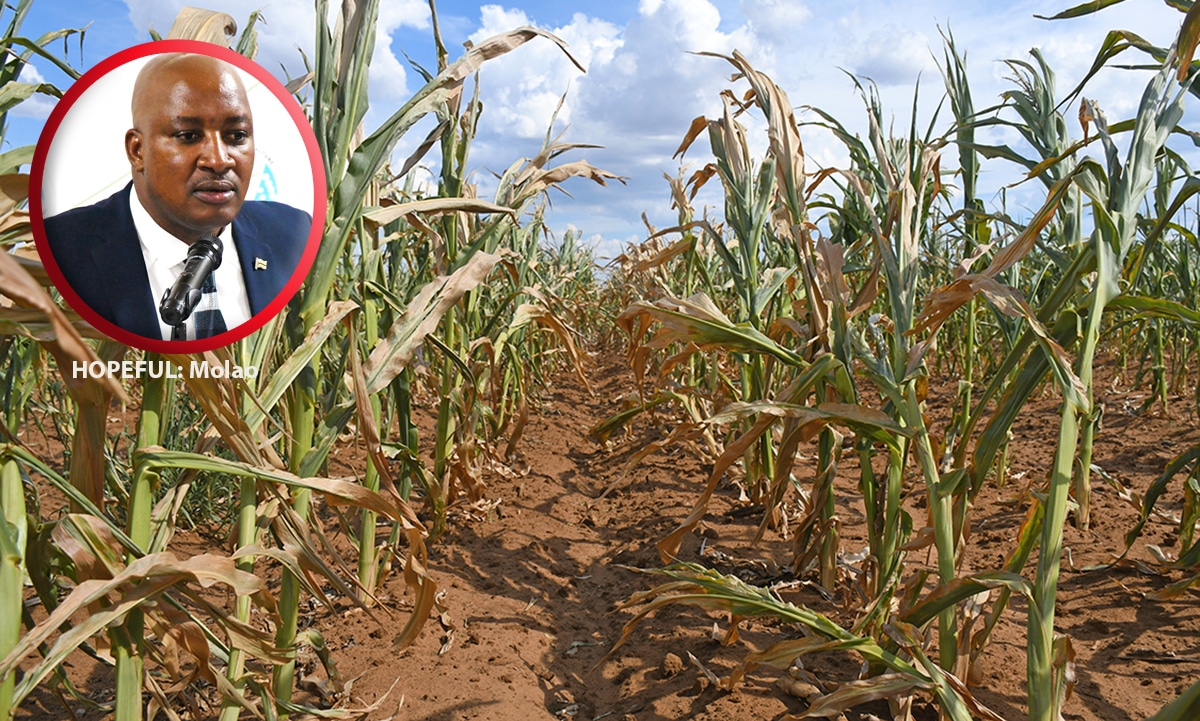El Nino sparks severe cereal shortage and economic crisis
Following the declaration of the 2023/24 ploughing season as a drought year, a severe cereal shortage looms.
The El Niño induced drought resulted in the delayed rains and extensive dry spells which negatively affected the agricultural sector with many plants dying late last year and early this year due to prolonged heat waves.
The drought impact has resulted in low crop yields which has negatively impacted income and food security at household and national levels with anticipated high inflation of commodity prices owing to food security and supply deficit.
Addressing the media during the Rural Development Council meeting last week, Minister of Agriculture Fidelis Molao said it is anticipated that the national cereal yield would be only six per cent of the 300 000 tonnes of cereals needed annually.
During the 2023 harvest period a total of 7000 metric tonnes of sorghum was received against 65 000 metric tonnes which was expected from 40 000-44 000 hectares. In terms of maize only 4 000 metric tonnes was received.
“The comparative analysis between national crop yields and the cereal requirements revealed that the yields did not meet the country’s demand. As a result, this means the country will be overly dependent on imports. Further, low yields had implications on the livelihoods of many households, particularly small holders which led to a serious food deficit at family level,”
While much blame is pinned on drought and climate change issues, statistics indicate that, a yield from farmers has been on a downward spiral over the years.
In 2019, expected sorghum yields was 53 945MT from farmers but only received 28 659 leading to a variance of 25 286.
The trend continued in 2020, with BAMB receiving only 37 832 instead of 53 283 resulting in 15 451 deficit.
Later in 2021, the variance skyrocketed to 30 769 after BAMB received 22 562.06 of harvest from a possible 53 331.
In 2022, the figures declined even further with BAMB getting 11 387 MT from 20 420 that was expected therefore leading to a 9 033 deficit.
“To deal with the effects of low rainfall in the horticultural sector, government has incorporated crop irrigation in the Temo Letlotlo programme as a way of mitigating the effects of drought. Thuo Letlotlo programme also has water development aspect which would enable farmers to drill and connect boreholes for ploughing and irrigating animal feeds during drought spells,” added Molao.
Nonetheless, the government remains committed to alleviating the effects of drought more especially from rural area dwellers since they are the most affected.
While government will consider tailor made drought relief programmes for RADs for their sustenance during the drought season, there is a possible consideration of increasing the Ipelegeng quota to cater for RADs and upgrading the school feeding programme to improve children nutrition.
“Rural Area Dwellers (RADs) seem to be more vulnerable during the drought period due to various factors like lack of economic activities and jobs in their area, but I nonetheless need to emphasise that the ministry will continue to drive rural enterprise development through funding support and coordination of community projects,” added Assistant Minister of Local Government and Rural Development, Mabuse Pule.







